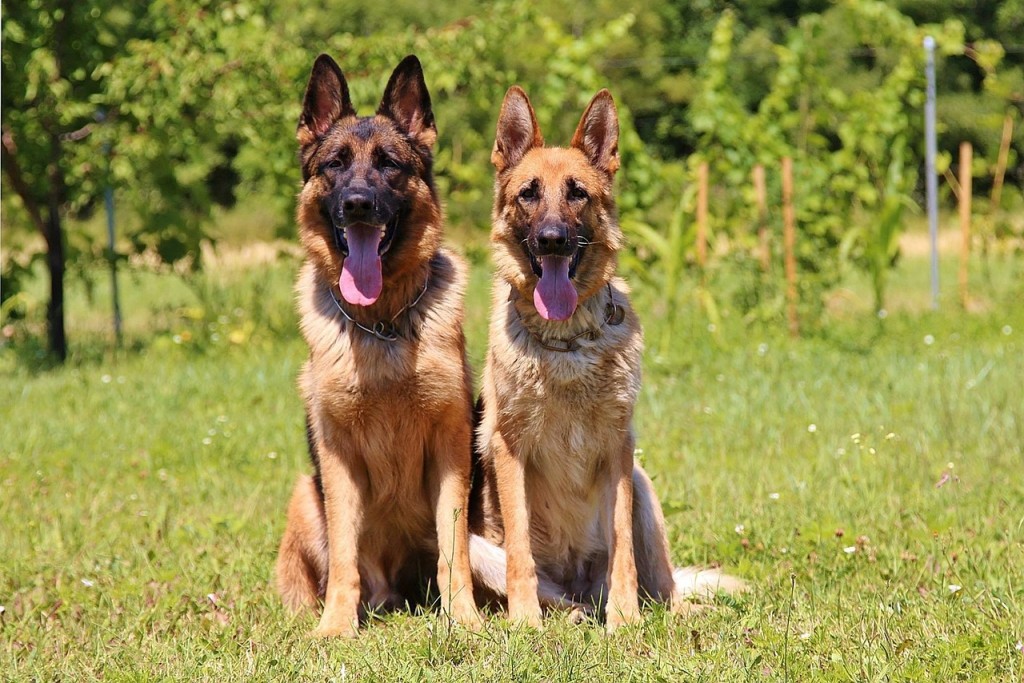A German Shepherd Dog (GSD) is incredibly the most muscular dog of all its canine royalty. It is large, agile, athletic dog with a noble behaviour and high intelligence. The GSD origin dates back to the 19th century where there existed diverse German herding dogs whose duty was to herd and protect a flock of sheep from predators.

It is documented that the most intelligent, responsive, and obedient German Shepherds were bred to produce the modern-day German Shepherd. The modern-day German Shepherd Dog has desired characteristics that distinguish it from others of its class, they are:
- Loyal
- Confident
- Courageous
- Steady
Contacting your veterinarian is the first move before taking your GSD to train. This is a critical step that you should not skip. This is because you must ensure that your GSD is in good health to participate in any activity. So, before you even start planning the schedule, make an appointment to discuss your pet’s health and any special needs it will have during training. After receiving a good judgement from the veterinarian, you can develop a timetable that you should adhere to religiously.
Let us now dive deep into what you should do and what you should never do when drafting an exercise plan for your GSD.
Best Gifts for German Shepherd Lovers
[ux_products products=”24″ tags=”german-shepherd-products” orderby=”rand”]The do’s
1. Do keep an eye on your dog’s paws
Keep an eye for hot pavement on your dog’s paws. These vulnerable areas are prone to burns. Place your palm flat on the surface you will be walking or running on. Check your dog’s paws for cuts or abrasions when you get home.
2. Do carry water when exercising
When exercising during a hot day, you should consider bringing water with you. Then, when performing the actual exercise, you can give your GSD some water and remember to take frequent water breaks.
The don’ts
1. Don’t ignore your pet’s breed and age
Age will undoubtedly influence the type of exercise activity in which you will involve your GSD. So, if you have dogs of varying ages, make sure to designate different workouts for each age group. Older dogs may require more time to adjust to exercise and may require shorter workouts.
2. Don’t exercise your GSD after eating
Large dog breeds like German Shepherd are always susceptible to bloat. Bloat is a disease in animals that is characterized by the accumulation of gas in the stomach. It happens when an animal’s stomach twists, and if medication is not administered at early stages, the results can be fatal. So, make sure you give your GSD a better time for food to digest.
3. Don’t overdo the amount of exercise.
Setting a time limit for each exercise should be considered for all GSD dogs. Please do not exceed the time limit because it is ineffective. It is recommended that a month-old GSD exercise for five minutes while for a four-month-old twenty minutes of exercise is sufficient. Remember that your dog’s health can also influence the time of exercise.
4. Don’t ignore signs of stress
Are you aware that exercising your dog in hot weather can increase your dog’s risk of heatstroke? When the body cannot cool itself, heatstroke occurs, leading to organ failure and eventually death. To learn about the possibility of heatstroke, you should check the following signs: panting excessively, drooling, Gums and tongue that are unusually red, attempting to lie down, stop or seek shade, rapid or erratic heart rate, collapse, or other signs. Of course, the most convenient schedule for workouts is the cooler time of the day, for instance, early morning or late evening.
Young German Shepherd
As a German Shepherd Dog owner, you should also know that your GSD puppies will require a completely different kind of attention during exercising. Two things can permanently harm your dog, these are:
- Too much exercise.
- Wrong kind of activity.
How does the damage occur?
Puppies have growth plates that slowly ossify into strong bones once they reach adulthood. There are hazardous activities that can cause injuries in the growth plates, resulting in lameness. The best way to avoid this is to avoid doing too many exercises, which can harm the puppy by causing deformities. So, until the puppy is 18 months old, the trainer should only give it five minutes of training per day. After 18 months, it can be subjected to moderate exercise.
5. Don’t encourage jumping and leaping games
It does not mean you should avoid jumping and leaping entirely, but doing so once in a while is acceptable. However, make sure that these activities are moderated.
6. Don’t try to train your puppy to be a Stairmaster.
Some stair climbing during the day is fine but should not in any way become an exercise program. Most injuries can come their way through stair climbing activities.
Do play games such as hide-and-seek, racing, and mental concentration games. Puppies are enthusiastic players in various sports, including hikes, stick throwing adventures, and other games that they enjoy. Therefore, they might not know when it is an appropriate time to stop, and they will continue to do so until they pass out. Consequently, you have to be a moderating master during the entire exercise session.
